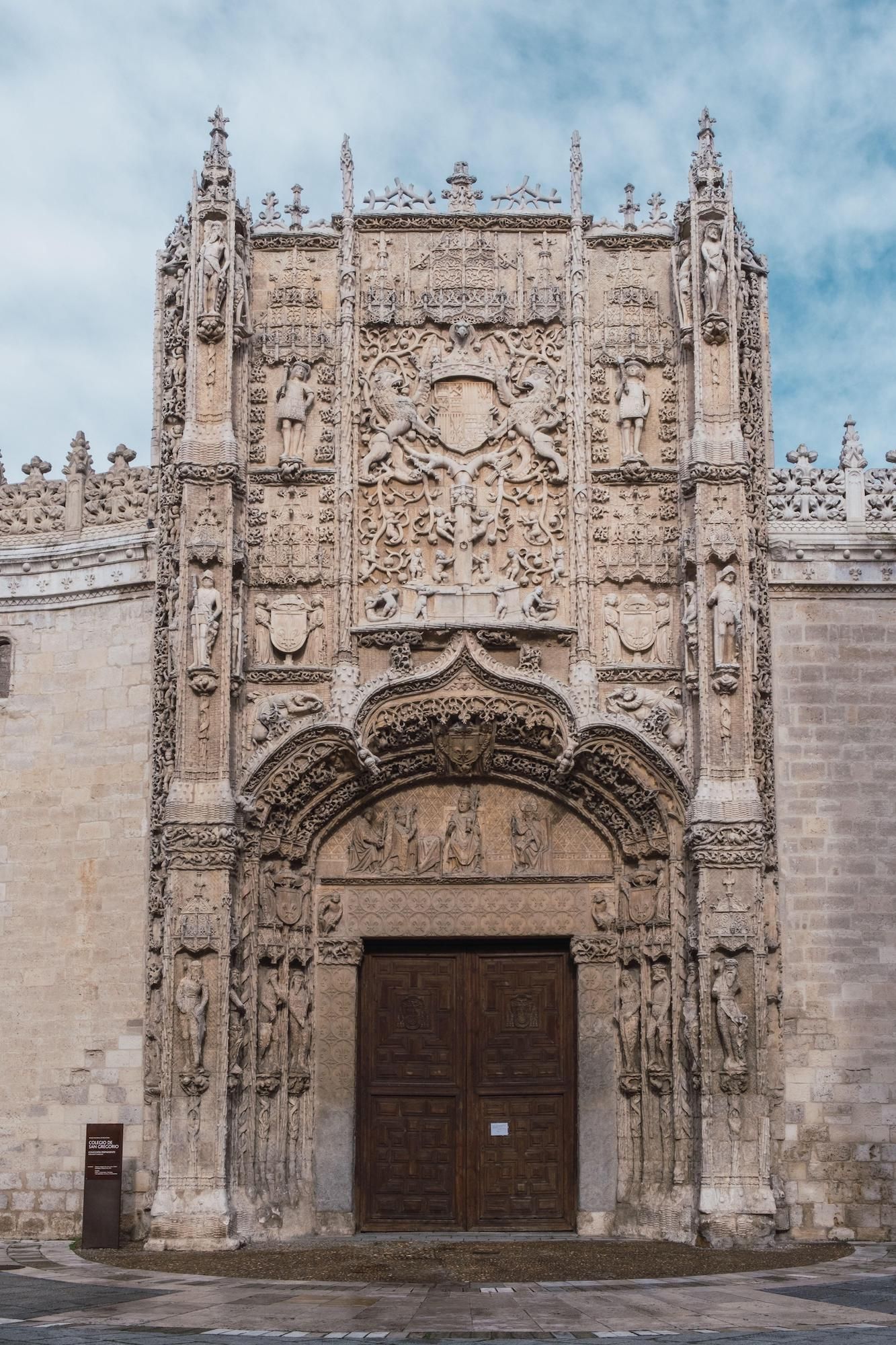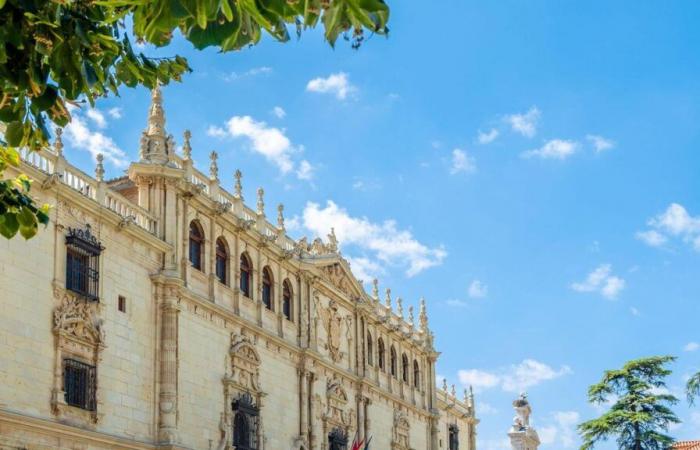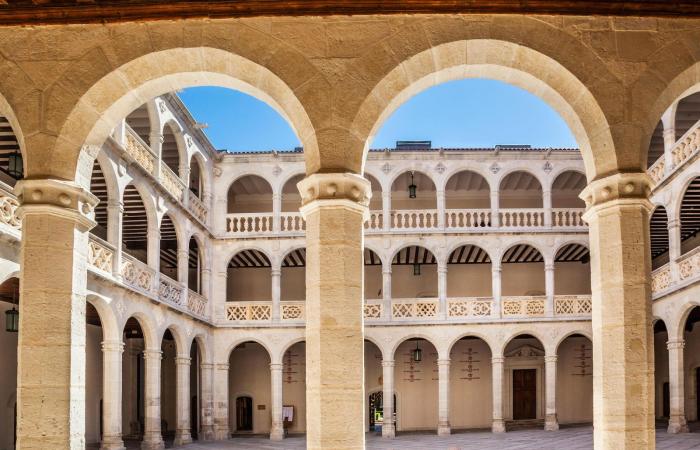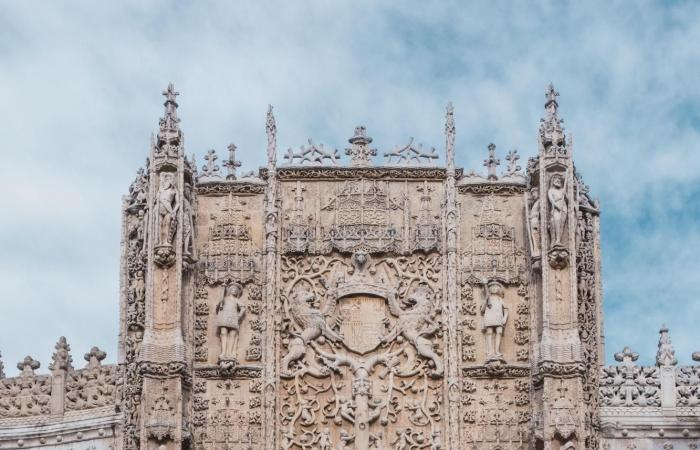Renaissance in Spain is a Resurgence of classical thought To respond to the existential needs of a society that wanted to leave behind the Middle Ages to embark, never better, in the conquest and discovery of new horizons. Influenced by ItalySpain captained this company, and thanks to the contacts of Castilla and Aragon With Rome and Naplesthe Gothic soon gave way to two new styles: the plateresco and the art “to the Roman” that would soon dominate the landscape of the cities of Spain and the new world.
Palacio de Santa Cruz, Valladolid (1488)
The Palacio de Santa Cruz, current university rector from Valladolid, is considered The first Renaissance building in Spain. His early construction in 1488 Avecina The new Castilian nobility linked to the growing bureaucracy of The Catholic Monarchs. These new lineages are the same that intend to separate themselves from the Gothic style, teaches of the old aristocracy, to embark on the construction of a “to the Roman” building: with buttresses, pinnacles, grutescos and semicircular arches that evoked a past away from feudal rigidity.
The memory of Rome inspires the new nobility, bureaucrat and educated, of the Court of the Catholic Monarchs, while their republican myth pushes them to think that, one day, nobles and notaries will become as powerful as the old nobles whose wealth is based on the victories of the reconquest. The Middle Ages began to die in Castilla when the Santa Cruz Palace rose next to Pisuerga.
In the Palacio de Santa Cruz, Valladolid.Alamy
San Gregorio College, Valladolid, 1496
The facade of the College of San Gregorio, actual National Sculpture Museumappears by surprise in the shadow of the also Renaissance Villena Palaceand it is mandatory to wait for the sun of Castile Illuminate your limestone To be able to admire its beauty.
Conceived as a banner that flames at the head of an army, The school facade from San Gregorio is an ode to the theory of Renaissance power already The virtue that the knights represent And its antonyms, the wild stone men who observe us, mocking and happy for not having known the tribulations of civilization yet. The San Gregorio College was destined to educate the children of the nobility destined to hold important ecclesiastical positions.

The facade of the College of San Gregorio, Valladolid.Alamy
Theology students had to pass every morning under the reliefs of the Tree of life and the source of wisdomand we still continue to dedicate books and hours to explain the meaning of the countless reliefs that look at us from above. Very close, just around the corner, The facade of the convent of San Pablo Sigh: The new art of the Hispanic rebirth has arrived to overshadow its gothic beauty.
Colegio Mayor de San Ildefonso, Alcalá de Henares, 1499
The end of the Granada War and the discovery of America in 1492 changed the future of Castile completelyto the point that an image change was necessary that represented the new power that the Catholic Monarchs expected to embody. Isabel and Fernando, according to almost everything, sought to combine the defense of the Catholic tradition with the gaze towards the future that is summarized in their “Plus Ultra” manido, and for this, they needed a style that arose in Alcalá de Henares. The facade of the San Ildefonso College It is the most illustrious monument of Alcalá, and in it we can find elements of the Gothic, such as the portraits of apostles and saints, wrapped in medallions in the “Roman” style that began to spread from Italy. Muscular and gargolas atlantes Natre Dame That is because, in Alcalá, there has been one more step towards the full rebirth of classical forms.








